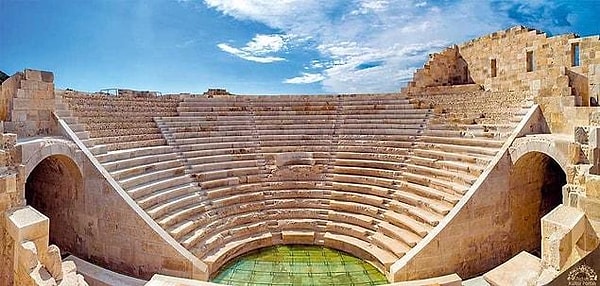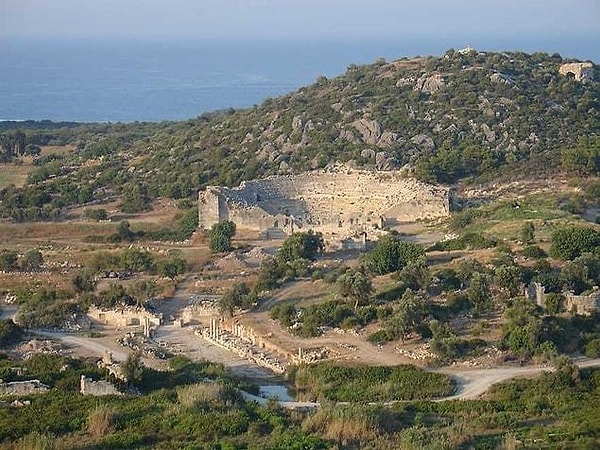Some of the important structures you will see in the ancient city of Patara are the Roman Triumphal Arch, temples, necropolis area, lighthouse, bouleuterion (assembly building), city gate, theater building, churches, baths (Bath of Nero, Bath of Vespasian), granarium (granary) and warehouses.
In addition to being an interesting ancient city, Patara is famous for its magnificent Patara Beach and the spawning grounds of Caretta Caretta turtles. Many people flock to Patara Beach during the summer season. Because it is one of the rare places where these turtles lay their eggs, it is protected by the World Wildlife Fund.
The ruins of the city of Patara begin even before reaching Gelemiş Village. Lycian sarcophagi and Roman sarcophagi can be seen in the necropolis of the city. Built in the late 1st century AD, there is a magnificent Triumphal Arch that can be seen from the roadside 2 km after Gelemiş Village. The theater on the slope of the hill was built during the reign of Emperor Antoninus Pius.
Important information about a few buildings that you should definitely see is as follows:
Bouleuterion
This is the assembly building where the elected representatives of the Lycian League gathered. It is larger than an average bouleuterion, it can seat 1000 representatives. It has a seating arrangement similar to a theater. It has recently been restored and opened to visitors.
Amphitheater
It is one of the largest amphitheaters in Anatolia with a capacity of more than 6000. The entrance of the amphitheater is different from typical Roman Theaters. Since it does not have a vaulted entrance, it is an example of the transition from Hellenistic tradition to Roman architecture.
Lighthouse
The remains of the world's oldest lighthouse have been found under piles of sand on Patara Beach. The lighthouse was the height of a five-story apartment building. A bronze inscription shows that the lighthouse was built by the Roman Emperor Nero between 64-65 AD.



